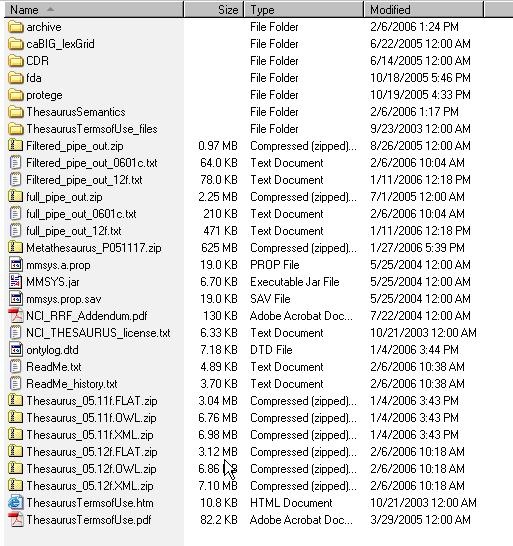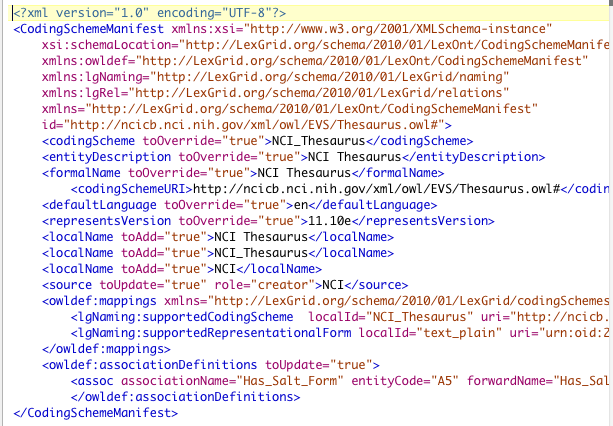 |
Page History
| Scrollbar | ||
|---|---|---|
|
...
| Page info | ||||
|---|---|---|---|---|
|
| Panel | ||||
|---|---|---|---|---|
| ||||
|
...
Step | Action | ||||||
|---|---|---|---|---|---|---|---|
1 | Using a web or ftp client go to the URL: ftp://ftp1.nci.nih.gov/pub/cacore/EVS/ | ||||||
2 | Select the version of NCI Thesaurus OWL file you wish to download. Save the file to a directory on your machine. | ||||||
3 | Extract the OWL file from the ZIP download and save in a directory on your machine. This directory will be referred to as NCI_THESAURUS_DIRECTORY in script examples. | ||||||
4 | Create Manifest and Preferences files. (optional)
| ||||||
5 | Using the LexEVS command line, load the NCI Thesaurus with no options:
For Windows installation use the following command:
For Linux installation use the following command:
This should work best with a "by code" type Thesaurus source terminology. | ||||||
6 | Using the LexEVS command line, load the NCI Thesaurus with options:
For Windows installation use the following command:
For Linux installation use the following command:
|
...
| Note | ||
|---|---|---|
| ||
If a 'releaseId' occurs twice in the file, the last occurrence will be stored. If LexEVS already knows about a releaseId (from a previous history load), the information is updated to match what is provided in the file. | ||
| Wiki Markup |
| Scrollbar | ||
|---|---|---|
|






